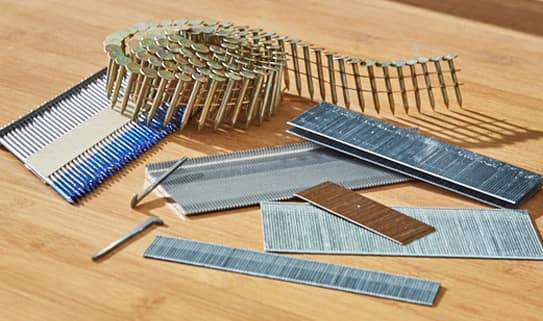Triangle® Mastercard® $150 Bonus CT Money®††. New Cardmembers only. Conditions Apply. Ends May 31.
Learn MoreThis paragraph should be hidden..
How to choose an air nailer
From big jobs, like building a house, to small jobs, like fastening trim, an air nailer can save time, reduce effort and assist you in completing a professional looking job. Here are some things to keep in mind when choosing an air nailer.


- TYPES
- COMPATIBILITY
- FEATURES
Small body nailer
If you are doing jobs using smaller nails, such as putting up trim and fixing or refinishing furniture, you’re going to want a small body nailer.
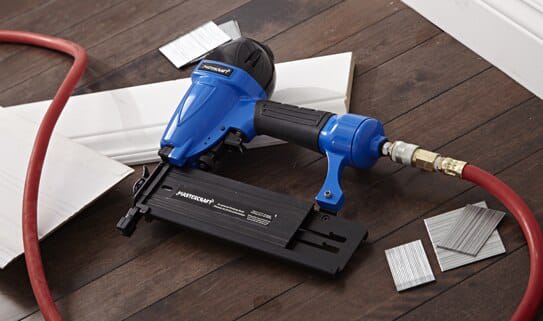
Pin nailers
Using very small 23 gauge nails, these barely leave a hole on the surface and are ideal while working on furniture, cabinets and trim work.
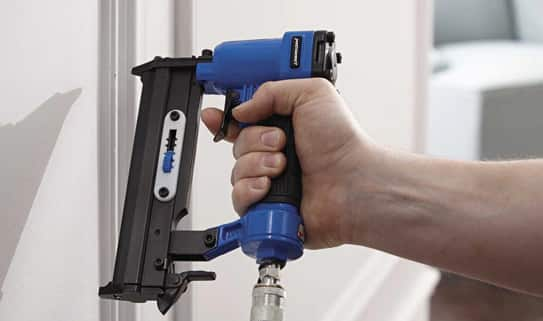
Finish nailers
These nailers are designed to nail trim and mouldings. The thin nails used with the tool are less likely to split trim boards compared to other framing nails or wood screws.
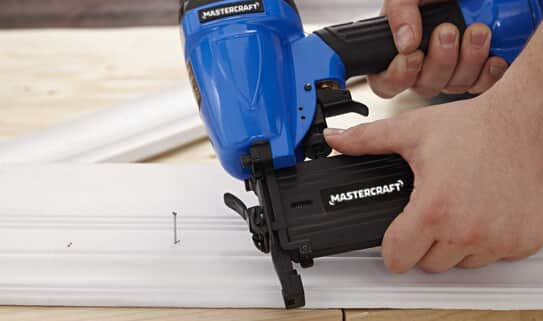
Brad nailers
These use small 18 gauge nails that work well on soft wood trim without the risk of splitting the wood.

2-in- 1 nailers
These versatile tools can be used with both 18 gauge brads or 18 gauge staples.
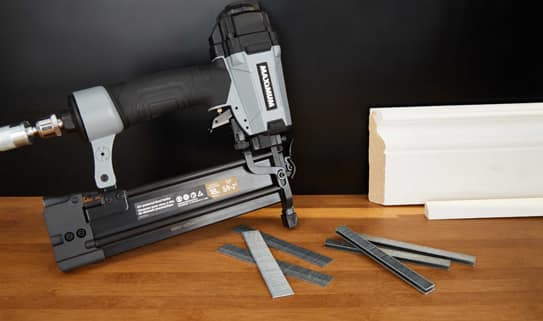
Large Body Nailers
For jobs that require larger nails, such as framing, flooring, roofing or general construction, you’ll need a large body nailer.
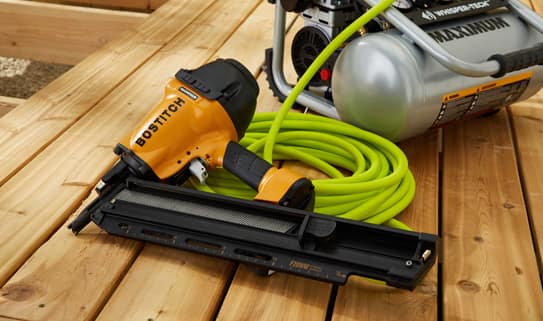
Framing nailers
This tool can drive 2” to 3.5” nails into heavy lumber, and is ideal for larger construction jobs such as building a deck.
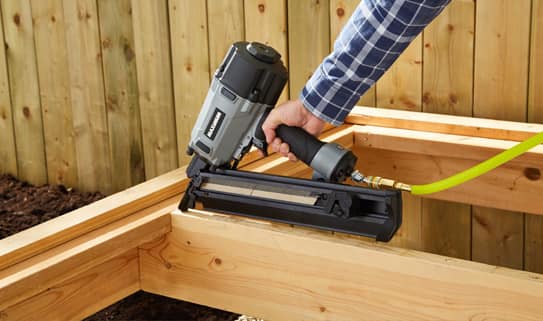
Flooring nailers
These make the repetitive task of nailing a floor easy, firing the nails and exactly the right angle required.
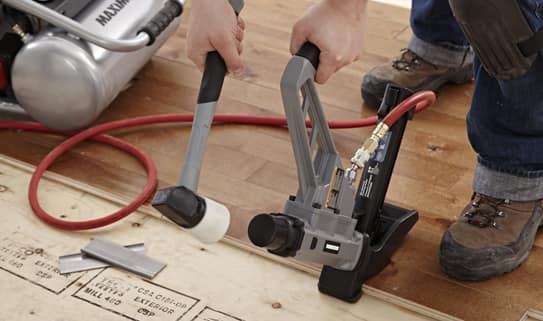
Roofing nailers
This tool holds ¾” to 1.5” nails and saves you both time and effort on the repetitive nailing required for asphalt shingles, fiberglass shingles, and insulation boards.
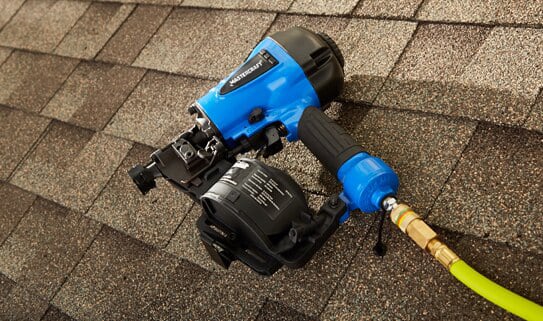
Compatible PSI and CFMs
When using a compressor to power a pneumatic nailer, it’s important to take two measurements into consideration to ensure proper compatibility. Every compressor has a pressure rating measured in PSI (Pounds per square inch) and a volume rating that is measured in CFM (Cubic feet per minute). Each rating should be greater or equal to the requirements of the nailer being used to ensure the tool operates to its greatest potential.
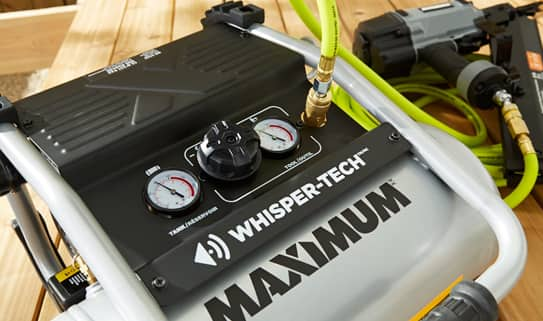
Contact or bump fire
This feature allows you to quickly deploy nails in succession while the trigger is depressed. This type of firing helps to speed up the job when you’re doing repetitive, extended work.
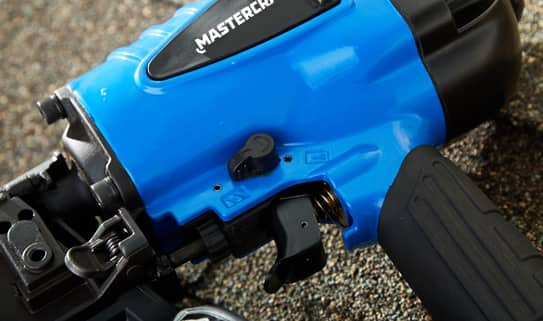
Depth adjustment
Having the ability to adjust the depth of the nail is important to ensure no nails are left protruding from the surface. Shoot off a few test nails into a scrap piece of wood to ensure you’ve got the appropriate depth before beginning a job.

Jam clearing and directional exhaust
Don’t lose work time due to a jammed nailer. A jam-clearing feature will allow the user to simply remove jams and get back to work quickly.
Directional Exhaust gives you the ability to channel the tool’s exhaust. This feature is useful when working in dusty or confined work areas to ensure no debris gets blown back at the user.

Swiveling air connectors
Having a swiveling air connector will allow the user to maneuver more freely when operating the tool.
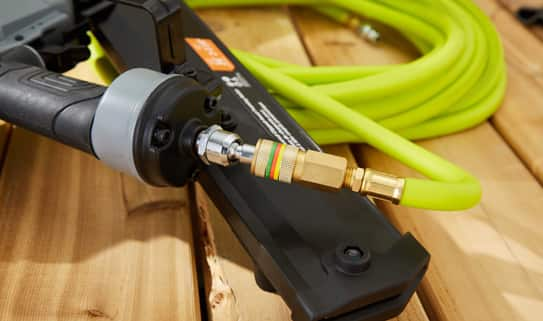
Compatible fasteners
Don’t forget to buy nails that are compatible with your nailer. Compare the gauge and length of your nails to the gauge of your nailer. You can generally find information on the required nail type and size on the side of the loading magazine on the tool.
